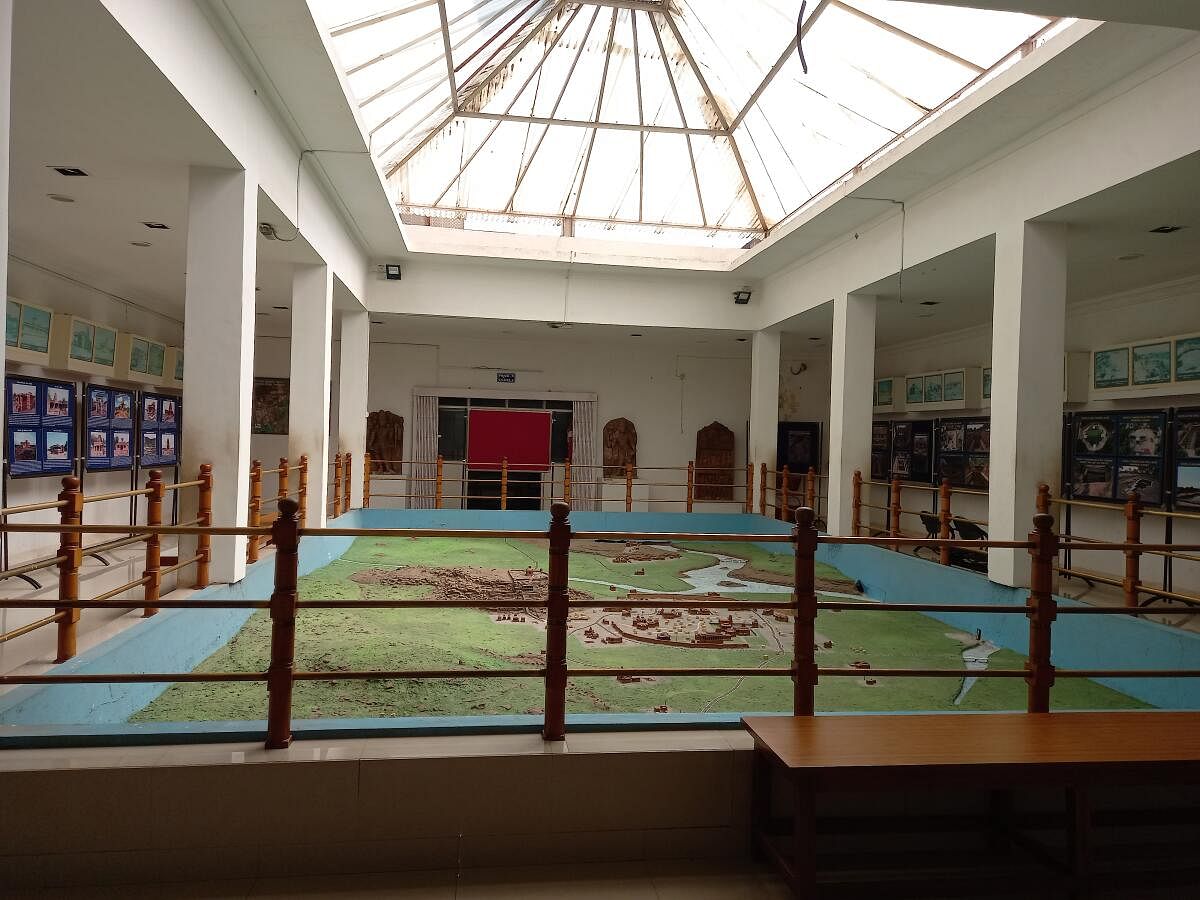

The Badami-Pattadakal-Aihole circuit is, in itself, a heritage lover’s dream come true. But the museums at Badami and Aihole also offer a glimpse into the historical and academic aspects of the culturally rich region.
The Archaeological Museum at Badami, near the rock-cut cave complex, is a must-visit to learn about the Chalukyas of Badami and the Rashtrakutas, who left an indelible mark in history. Interestingly though, the Badami rock-cut caves have a whole segment dedicated to Jain images, apart from the one Shaiva and two Vaishnava caves. But the museum has just one mutilated Tirthankara idol placed at the entrance. The huge Makara Toran, which sits at the entrance is now being worked upon. This idol is the highlight of the museum.
The archaeological museum at Aihole, nestled within the Durga Temple complex, is a treasure trove of ancient artefacts and sculptures. With its impressive collection of 381 antiquities, it includes stone sculptures representing Hindu, Jain, and Buddhist faiths, as well as inscriptions, hero stones, and other archaeological finds.
This museum is a must-visit destination for history enthusiasts and archaeology aficionados. Work on the museum began way back in the 1970s and extended right up to 2000. The open-air gallery in front of the museum has over 40 artefacts, including Nag-Nagini figurines, Jain images, Saptamatrikas and hero stones.
Historical significance
Aihole, also known as Aiyyavolal, Aivalli or Aryapura, was once a prominent centre of art and architecture during the Chalukya dynasty's reign in the 6th-8th centuries CE. The region flourished as a hub for religious, cultural, and architectural activities. The Chalukyan kings made efforts to popularise Shaiva, Vaishnava and Jain traditions and religious practices.
Over time, Aihole emerged as an important archaeological site, unveiling numerous temples, sculptures and inscriptions (including the Meguti inscription) that provide invaluable insights into ancient Indian civilisation. They trace the periods of the Badami Chalukyas, the Rashtrakutas and the Kalyani Chalukyas.
Stone sculptures
The museum at Aihole houses an extensive collection carefully preserved and displayed for visitors. It is divided into six galleries, each focusing on different aspects of the region's rich heritage. Among the noteworthy exhibits are stone sculptures such as those of Yaksha and Yakshinis (guardian deities of the Tirthankaras in Jainism), idols of the Tirthankaras and a spectacular sculpture of Kushmandini (Ambika).
Other sculptures leave you spellbound with their form, emotions and proportions. The numerous forms of Naga-Nagini, many placed in the open-air exhibit at the entrance, depict the popularity of this form of worship at that time.
One of the galleries has a unique model of the Aihole village with its scattered monuments. It offers a bird’s-eye view of the entire site. Also interesting are the detailed descriptions of the various architectural styles developed during the reign of the Badami Chalukyas. The tales of the conservation of the Jain temple and the important inscriptions in the Aihole-Pattadakal region are also fascinating. The gallery houses numerous posters depicting India’s rich archaeological treasures.
One must definitely take time to read through the panels that explain the history behind the temples, the efforts of conservation and the nuances of the various kinds of architecture. It is only by knowing the background that one can fully appreciate the sights.
In a bygone era when rulers documented their legacies for posterity largely through the creation of monuments, the dynasties in the Deccan region — the Chalukyas, Rashtrakutas and Rattas took the matter seriously. They converted the whole Deccan region into an encyclopaedia in stone.
While the Rashtrakutas focused on building Jain temples, the Chalukyas experimented with various styles of architecture. So the next time you visit Badami and Aihole, visit the museums first and then venture into the huge paradise created in stone. The Aihole museum is closed on Fridays and is open from 9 am to 5 pm on other days.